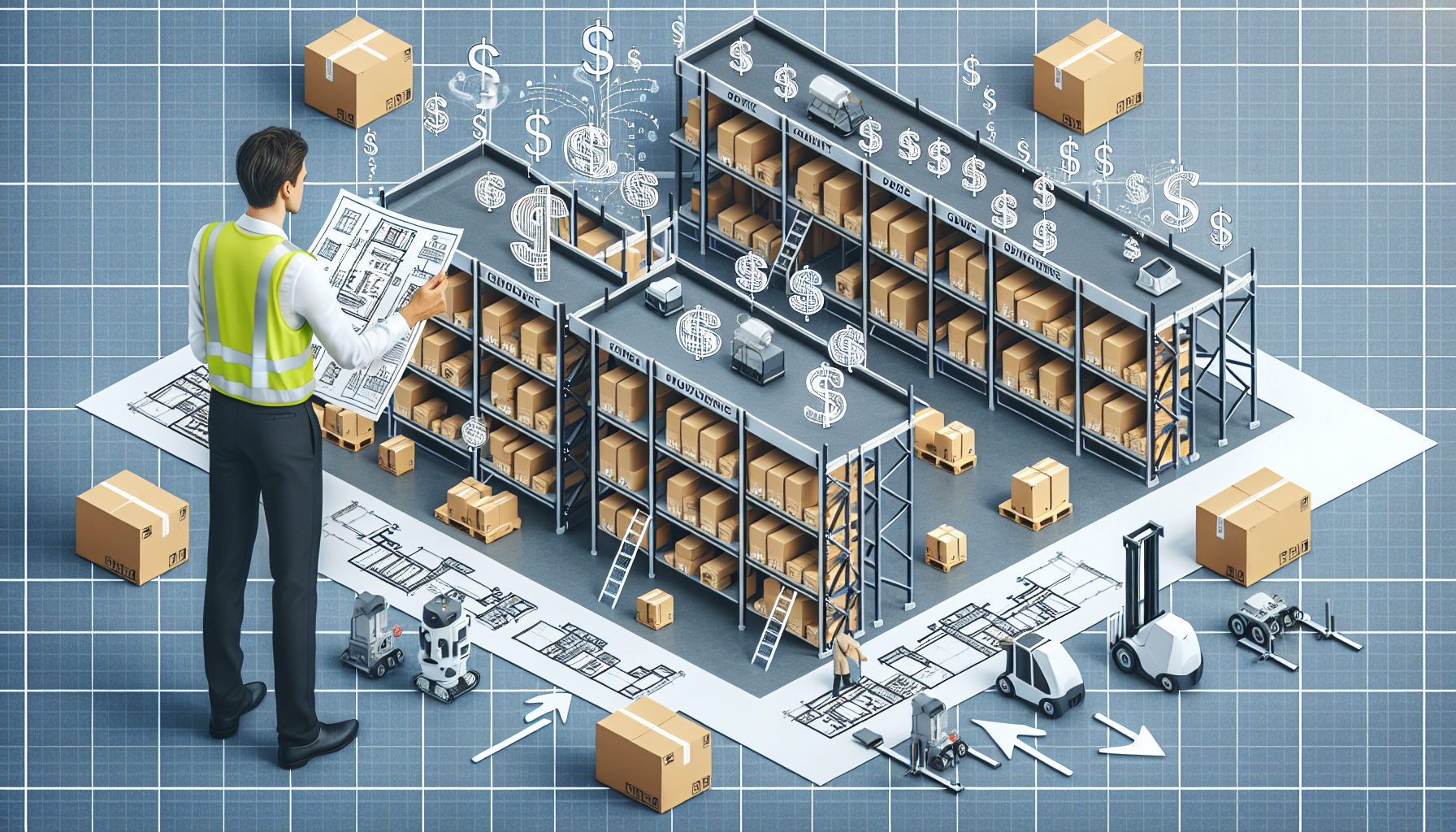When it comes to optimizing warehouse operations, one crucial aspect that businesses often overlook is the layout design. The way a warehouse is structured can have a significant impact on its cost efficiency. A well-thought-out warehouse layout can not only streamline processes but also maximize space utilization and enhance employee productivity.
The Importance of Efficient Warehouse Design
Efficient warehouse design plays a vital role in improving overall operational efficiency. It involves strategically organizing different functional areas within the warehouse to ensure smooth flow of goods and minimize unnecessary movements. By optimizing the layout, businesses can achieve several benefits:
- Space Utilization: A well-designed warehouse layout helps make the most of available space. By carefully planning storage areas, aisles, and racks, businesses can maximize storage capacity and reduce the need for additional storage space.
- Inventory Management: An efficient layout enables businesses to implement effective inventory management practices. By organizing products based on their demand and placing frequently picked items closer to the shipping area, businesses can reduce order processing time and minimize errors.
- Productivity and Workflow: A well-optimized layout streamlines workflow and minimizes the time and effort required to complete tasks. By reducing travel time between different sections of the warehouse, employees can concentrate on value-added activities, resulting in improved productivity.
- Employee Safety: The layout design also plays a crucial role in ensuring employee safety. Well-defined walking paths, proper lighting, and clear signage help reduce accidents and promote a safe working environment.
- Cost Reduction: An efficient warehouse layout can lead to significant cost savings. By minimizing wasted space, optimizing picking paths, and improving material flow, businesses can reduce labor costs, inventory holding costs, and operational expenses.
Given the numerous benefits, it is clear that warehouse layout design is a critical factor in achieving cost efficiency. However, designing an efficient layout requires careful analysis, planning, and consideration of various factors.
Factors to Consider for Effective Warehouse Layout Design
When designing a warehouse layout for optimal cost efficiency, businesses should take into account the following factors:
- Workflow and Process Flow: Analyze the workflow and process flow within the warehouse to identify bottlenecks and areas that can be streamlined. Consider the order fulfillment process, product classification, and the sequence of operations.
- Product Characteristics: Different products may have specific storage requirements. Consider factors such as size, weight, perishability, and fragility when planning the layout to ensure appropriate storage solutions.
- Storage Systems: Choose the right storage systems based on the nature of products and operational requirements. Options include pallet racking, shelving, mezzanines, and automated storage and retrieval systems (AS/RS).
- Material Handling Equipment: Determine the appropriate material handling equipment based on the layout and intended operations. Forklifts, conveyor belts, and automated guided vehicles (AGVs) can significantly improve efficiency and productivity.
- Ergonomics and Safety: Prioritize employee safety and ergonomics when designing the layout. Ensure easy access to equipment and consider factors such as aisle widths, workstation ergonomics, and proper ventilation.
- Future Scalability: Anticipate future growth and design the layout with scalability in mind. Ensure flexibility to accommodate changes in product lines, storage needs, and order volumes.
By considering these factors, businesses can create an efficient warehouse layout that supports cost-effective operations and drives overall business success.
In conclusion, warehouse layout design plays a crucial role in ensuring cost efficiency within warehouse operations. An optimized layout can maximize space utilization, streamline workflows, enhance employee productivity, and minimize costs. By investing time and resources into designing an efficient layout, businesses can reap the long-term benefits and gain a competitive edge in the market.
For a comprehensive analysis of your warehouse costs and assistance in optimizing your warehouse layout, contact HCO Innovations. Our team specializes in providing warehouse optimization solutions that enhance safety, productivity, efficiency, and cost-effectiveness. Learn more about our warehouse cost analysis services and start optimizing your warehouse operations today.

